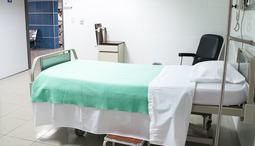- On
- 29 Jul 2024
- Reading time
- 5 minutes
The division between traditional medicine and modern innovations in the healthcare industry often sparks a major debate. For example, traditional medicine is rooted in centuries-old practices and cultural wisdom and contrasts with modern technologies and the scientific progress of modern medicine. However, in recent years, there has been a noticeable drift towards bridging this gap, taking advantage of the strengths of both approaches to improve overall patient care and medicinal outcomes. In this article, we’ll discuss the differences between these two approaches, the gritty factors of these innovations, and some successful examples leading up to the present day.
Folk Medicine vs. Modern Medicine
From holistic medicines to spiritual healing rites, folk medicine is a broad range of practices that have been passed down through the years. These customs frequently focus on individualised treatment and holistic methods that are sensitive to cultural norms and available resources. For example, some methods include Ayurveda, herbal remedies, indigenous African medicine, as well as Kampo medicine from Japanese culture.
On the other hand, modern medicine makes extensive use of medications, advanced medical technologies, and evidence-based procedures to streamline patient care. While the latter offers accuracy, standardised therapies, and the capacity to address complicated medical diseases with scientific rigour, the above-mentioned is firmly ingrained in cultural history and community trust.
What does Bridging the Gap look like?
Integrating traditional and modern medicine has yielded so many positive solutions, especially with the challenges of global health. For example, it is a hybrid strategy that promises a more equal, efficient, and personalised healthcare system in the future. In addition, collaborative efforts have led to certain initiatives where traditional healers work alongside medical professionals to contribute some unique insights and bridge cultural gaps in the healthcare delivery of medicine from companies such as Deusmedical. This coordinated approach not only respects diverse cultural perspectives but also enhances patient compliance and overall health.
The Perks of Bridging the Gap
Combining traditional knowledge with modern alterations, healthcare providers can offer more comprehensive and inclusive care. In addition, patients will benefit from personalised treatment plans that respect cultural preferences while using advanced diagnostics and therapies to speed the healing process. Furthermore, the costs of healthcare will significantly reduce because there won’t be. Moreover, this will develop trust between healthcare providers and communities, promoting better compliance with medical advice and improving the overall public health.
Factors that have Impacted Innovations of Medicine
Healthcare technologies
New approaches to medical diagnosis and treatments are made possible by healthcare technology, which has a significant effect on medical breakthroughs. For example, wearable technology and telemedicine platforms provide better remote patient care and monitoring access, while advances in artificial intelligence and machine learning make these processes much more precise for personalised medication. Furthermore, technological developments like 3D printing and gene editing allow personalised therapies and possible remedies for hereditary illnesses to be created.
Economic inconsistencies
There have been quite a lot of inconsistencies in the global economic structures that have taken a toll on access to new technologies and innovations. For example, healthcare improvements have been affected by high expenses of research and development, regulations in place, and gaps in the market for start-up companies. Furthermore, some unequal investments in new inventions and budgets for healthcare in some countries will also have a negative impact on how well these innovations are adopted by the leaders of the market.
Laws and regulations
Laws and regulations indirectly impact the way medical advances are introduced to the industry. For instance, agencies like the European Medicine Agency (EMA) have their own set of laws and regulations for safety, the gauge of effectiveness and requirements before each innovation can even hit the market. In addition, although intellectual property laws can help to promote creativity, protect ideas, and implement extensive patent systems, they can also be quite the barrier to reaching the market. Furthermore, the General Data Protection Regulation (GDPR) sets privacy laws that protect the sharing of patient data, which can slow down how well data-driven technologies can improve.
What are some common Innovations in the Healthcare Industry?
Artificial Intelligence (AI)
Artificial Intelligence is the use of algorithms and computer systems for tasks that typically require human intelligence. Additionally, machine learning is one of AI’s aspects that focuses on teaching algorithms to identify health patterns and predict results using data. For example, AI can accurately analyse medical imagery such as MRIs and X-rays, which helps in the early diagnosis of disease. It can also be useful in forecasting patient outcomes and disease contaminations.
Telehealth/Telemedicine
Telemedicine refers to using technology to provide clinical health care remotely. For example, giving people medical attention from a van or in their homes. However, telehealth involves a broader range of remote health services, including telemedicine, health education, and remote patient monitoring.
3D Printing
3D printing plays a role in the areas of prosthetics and implants by creating three-dimensional articles for digital models. In addition, 3D printing helps surgeons plan their procedures properly while also reducing the cost of medical devices.
Wearables
Wearable ECG devices use electrode sensors to measure and monitor the electrical acidity of your body. These might include biosensors, Apple smartwatches, and fitness trackers which can collect health data from users throughout real time. Additionally, these devices can keep track of vital health signs, sleep patterns, and physical activity to detect any potential health issues earlier on, including but not limited to irregular heartbeats, high blood pressure, irregular glucose levels or those who might have diabetes or cystic fibrosis.
Moreover, Nanocomposite seaweed is being used as one of the sustainable materials to create accurate sensor technology for wearable devices to help keep track of joint movement, blood pressure, and pulse.
Robotics
Robotics are also used in different areas of healthcare, from surgical procedures to administrative duties. For example, these systems provide precision for surgeons in theatre as well as completing routine tasks like data entry and medication dispensing for patients. Furthermore, some systems can even help with physiotherapy by providing exercises for patients.
Conclusion
Embracing a collaborative strategy that capitalises on the advantages of both traditional and contemporary medicine is more important for the progress of healthcare than choosing between the two. In addition, a more and more inclusive healthcare environment is being built as we close the gap between antiquated methods and state-of-the-art technologies like telehealth and 3D printing. Furthermore, this integration not only respects and maintains cultural heritage but also improves the accuracy and efficacy of therapies. Therefore, by promoting cooperation between the two sides of medicine, medical practitioners will have an easier time tackling issues like economic inconsistencies and regulatory obstacles and they can guarantee that medical progress is both attainable for everyone.




